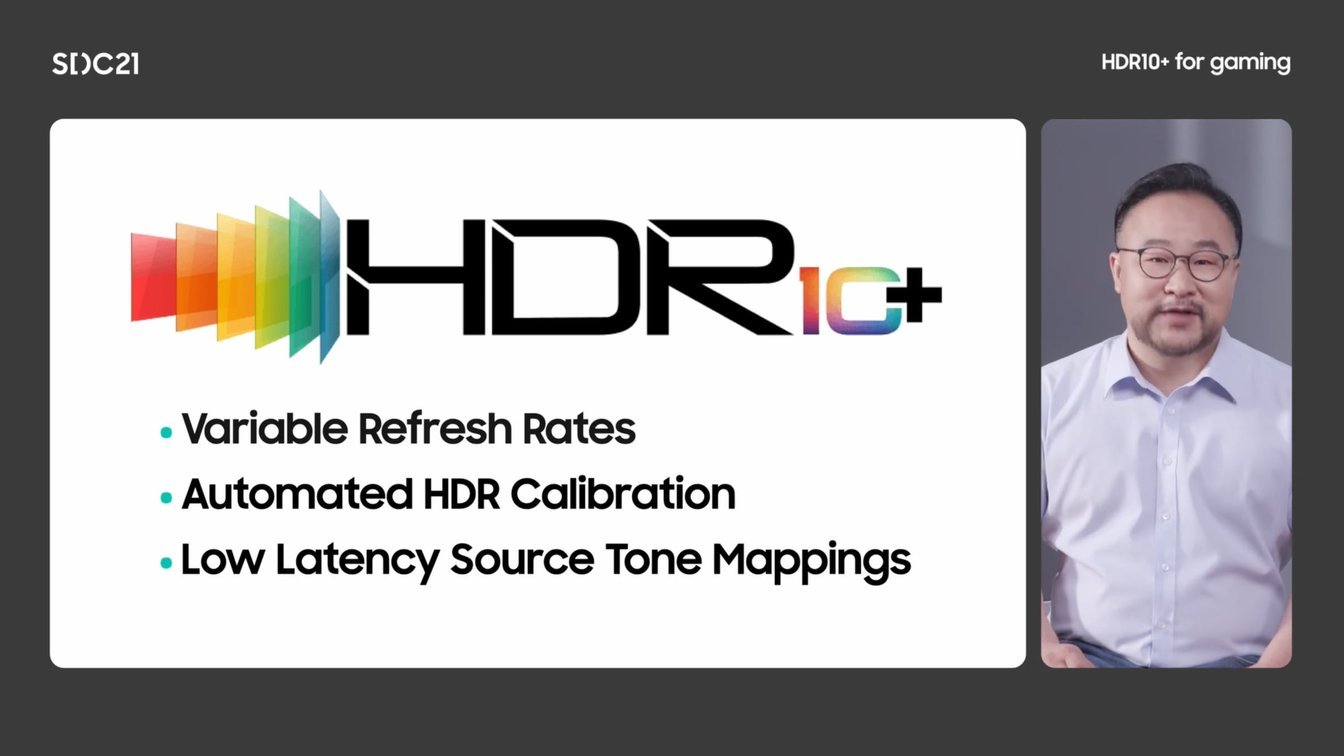Samsung Electronics will soon offer its TV owners an alternative to Dolby Vision gaming through a new HDR10+ Gaming Extension that will support Variable Refresh Rate, HDR auto-calibration and low latency tone-mapping when it launches next year.

The new feature was unveiled at this week’s Samsung Developer Conference 2021, as part of Samsung’s plans to optimise the premium high dynamic range format for games consoles and video game streaming services, FlatPanelsHD reported.
HDR10 + is an open and dynamic metadata platform for High Dynamic Range that was developed by 20th Century Fox, Panasonic and Samsung. It’s meant to rival the more popular Dolby Vision format that’s supported by TV makers such as LG Electronics. It has a big advantage in that companies don’t need to pay to license the technology, unlike Dolby Vision.
The announcement came during a keynote by Samsung engineer Bonggil Bak, who said HDR10+ for gaming will enable VRR at up to 120 frames per second. He added that the first TVs to support HDR10+ Gaming will launch in 2022.
No doubt, at least some of those supported displays will be the new QD-OLED TVs that Samsung has promised to launch next year. QD-OLED, which combines the Quantum Dots used in Samsung’s high-end Neo QLED TVs with OLED displays, is a new technology that’s likely to take over from Samsung’s QLED as its flagship display technology, at least until MicroLED becomes more affordable.
What wasn’t mentioned in the announcement is if any of Samsung’s existing TVs will be updated to support the HDR10+ Gaming extension.
The Automated HDR Calibration feature is, according to FlatPanelsHD, likely based on the HDR Gaming Interest Group of which Samsung is an official member. Bak explained that when a TV is hooked up to a games console, it provides its panel properties to the game’s HDR10+ processing block, enabling the game to automatically perform HDR10+ video output optimization for the display without the user needing to do this manually.
"This process is not only convenient but also very effectively preserves the original creative intent of the game creators,” Bak said.
As for Low Latency Source Tone Mapping, this helps to ensure the tone-mapping process in HDR10+ doesn’t add any extra latency to the video game signal.
Sony is already rolling out similar HGIG and Auto HDR Tone Mapping features on its latest TVs, and will soon add support for them for its PlayStation 5 consoles as well.
As mentioned, Samsung’s HDR10+ Gaming extension is meant to rival Dolby Vision gaming, which became available a couple of months ago when Microsoft enabled it on the Xbox Series X and Xbox Series S consoles.
Samsung will however face obstacles as it bids to make HDR10+ gaming more relevant. Previous reports have said Samsung is working with various partners on the idea, but it seems unlikely that Microsoft would be willing to support the format given that it has apparently signed some sort of exclusivity deal with Dolby Vision on the Xbox.
Sony is also most unlikely to adopt HDR10+ gaming on the PS5, given that Sony has resisted adopting the format on its TVs in favour of support for Dolby Vision. That said, Sony could possibly be interested in some kind of arrangement, given that it seems unlikely the PS5 will be able to adopt Dolby Vision in the near future.
More likely, perhaps, is that Samsung will instead focus on cloud gaming. Earlier this week it announced its plans to launch a new game streaming service on Tizen OS to rival the likes of Google Stadia, Nvidia GeForce Now and Xbox Game Pass. That service will probably launch next year assuming the company can get all of its chips in order.
Samsung could also look to form partnerships with Google and Nvidia to bring HDR10+ gaming to their game streaming platforms. For now we’ll just have to wait and see, with the next update likely to happen early next year, perhaps during CES 2022.